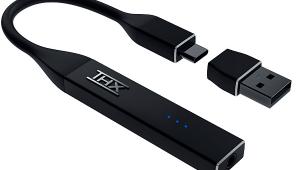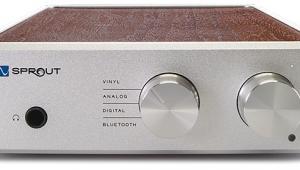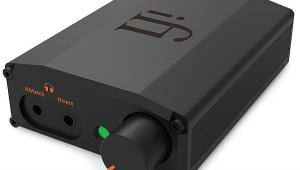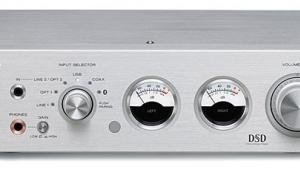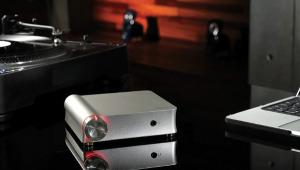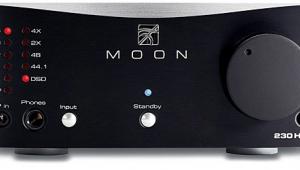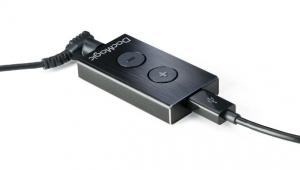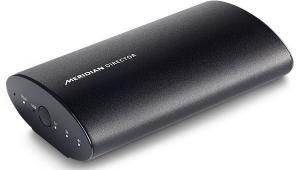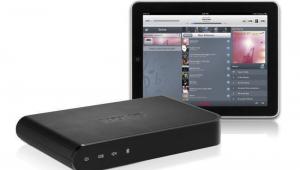iFi nano iDSD Black Label Amp/DAC Review Page 2
With Planar Magnetic Headphones
The Black Label performed brilliantly for a $199 amp/DAC, allowing nearly every headphone to fulfill most of its potential. As promised, it delivered enough juice to power even the most demanding of my headphones, with a little (or a lot of) room to spare. The IEM mode delivered less gain, allowing a wider range of volume adjustments for the more efficient ’phones. Tonal balance was on the light side, illuminating the presence region beautifully, while artfully dodging listening fatigue with most of the cans and content. Bass was usually sufficient but not outstanding. It was obvious that the Black Label’s heart was in its reproduction of vocals and instruments occupying roughly the same spectrum.
With the two HiFiMan planar headphones, the Black Label produced a suitably large and deep soundstage with a perspective that was up close but not uncomfortable, and it demonstrated loads of pleasurable tone color. Imaging was just how I like it: well outlined but fully fleshed out. Among the three orchestral test tracks, the star was the Varèse Sarabande release of North by Northwest. As my notes remind me, it literally made me say “wow” to an empty room. The top end’s rippling castanets were zingy and vibrant without being overwhelming. The recording is loaded with reverb and ambience, giving the orchestra an exotic undulating quality, and as reproduced here the long decays were rigorously structured and coherent. The spatial coherence also suited the massed strings and solo flute of the Venetian Concerto and the piano of the Goldberg Variations. With my go-to track for high-frequency finery, “Ben’s Farm in Vermont,” the Black Label excelled with every headphone; I never had to turn it up but could still hear all the delicate instruments at the low levels allowed by the recording.
The two folkie tracks showed how beautifully the Black Label could handle voices. It gave the Richard Thompson home-studio recording a full-bodied richness in both voice and acoustic guitar, a quality that would be elusive with the headphone output of an average smartphone or tablet. The gorgeously produced and engineered Nick Drake track was remarkable not only for vocal realism and balance but also for layering of complex arrangements. Steely Dan’s vocals, backing vocals, and horn charts also benefited from adroit layering, as did the numerous keening, chugging guitars overdubbed onto the Pink Floyd epic. The HiFiMan HE400S had a slightly darker tonal balance than the Edition X V2, which worked well on the King Crimson track, moderating the sax’s bright bite and giving the three clockwork drummers an attractive patina of grunge.
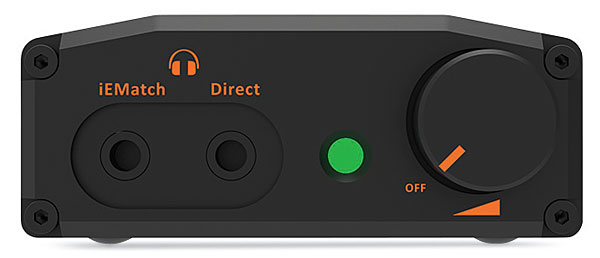
With Dynamic Headphones
When I moved from planar magnetic to the more commonly found dynamic headphones, the Black Label scored two out of three, enabling the AKG to conjure smaller but tighter images than the planars and conspiring with the Sennheiser’s peerless sense of flow.
And it handled the headphones’ challenging nominal impedances of 600 and 300 ohms, respectively, generally using half to two-thirds of the volume control’s range when connected to the higher-output jack. Only with the trebly Sony did the Black Label’s light tonal balance become too much of a good thing—though when I re-auditioned the Sony later, at the start of another day, I realized that much of my dissatisfaction was in direct comparison with the other headphones. With fresh ears, the Sony/iFi pairing wasn’t half bad.
With the orchestral and piano selections, the Black Label appropriately did little to offset the AKG’s darker tone, though this pairing still showed excellent detail retrieval on the chiming instruments of “Ben’s Farm,” and its imaging of the Bach piano track was the most straightforward and realistic of the lot. Lead vocals on all tracks that had them were similarly shifted to the dark side. The AKG/iFi combo got the meatiest groove out of Steely Dan and the best live feel out of King Crimson. This led me to veer from my playlist and put on Led Zeppelin’s “Black Dog” which erupted like Old Faithful; the urge to play it loud was irresistible and, thanks to the amp’s output capability, quite feasible. But, returning to the playlist, the AKG sucked the life out of Pink Floyd, turning vocals bland and guitars muddy. These ’phones also pinched my noggin painfully, reminding me why I rarely use them nowadays.
Putting on the plushly padded Sennheiser was a physical relief. Although they usually produce little low bass, their winning way with midrange not only flattered the strings of the Venetian Concerto but also gave them an irresistible sense of forward motion. In the giddy tarantella of North by Northwest, the Sennheiser/iFi team was dark like the AKG but close-up and vivid like the HiFiMan Edition X V2. “Ben’s Farm” lost some of its fleecy finery to the Sennheiser’s reserved top end, but the Bach piano track was pleasingly warm, with a medium perspective, neither in the piano nor too far from it. The word natural appeared in my notes on the Thompson and Drake tracks, with the latter inspiring a torrent of additional adjectives:
“dark, warm, smooth, flowing, each element in its place.” The Sennheiser/iFi team reveled in the lead vocals of Steely Dan but lost the lushness of the backing vocals; I blamed the headphones, not the amp. Toppy elements like King Crimson’s sax and Pink Floyd’s screaming-seagull slide-guitar effects were discreetly smoothed out—again, not unexpectedly, with these headphones.
The Black Label allowed most of the headphones to be the best versions of themselves most of the time. But with the Sony, it spotlighted a top end that is already prominent and clinical with most amps, leading to lower volume settings, drier textures, and miniaturized images. Even so, in one instance, the Sony/iFi combo succeeded where the Sennheiser/iFi combo failed, illuminating Pink Floyd’s airy vocals and complex thicket of guitars, even if the seagull effects were predictably searing.
For the price of a stick amp, iFi’s nano iDSD Black Label musters features and output capability you won’t get in most stick amps, yet it still fits in a pocket. It is ingenious, great sounding, and highly recommended.
- Log in or register to post comments
